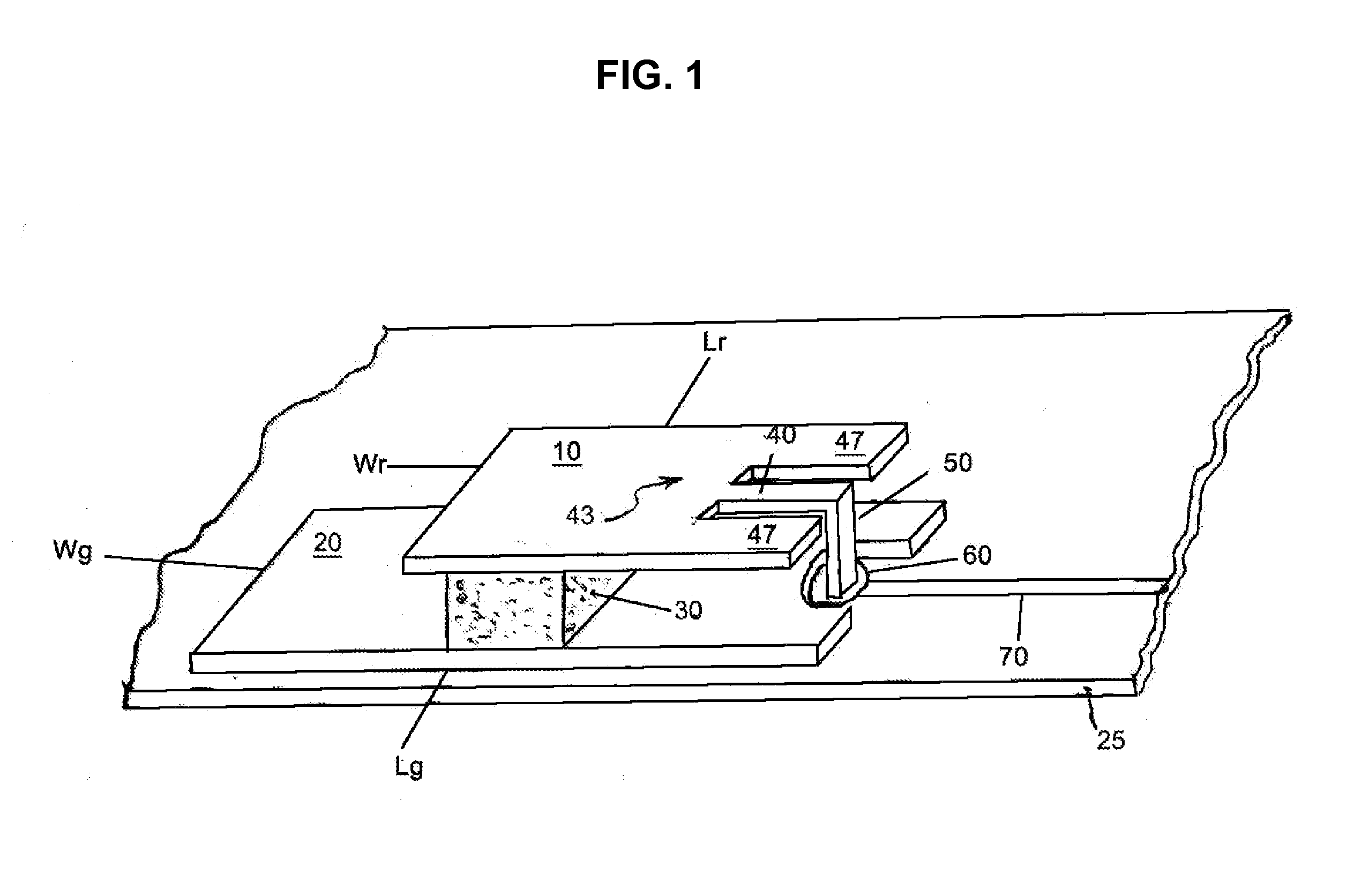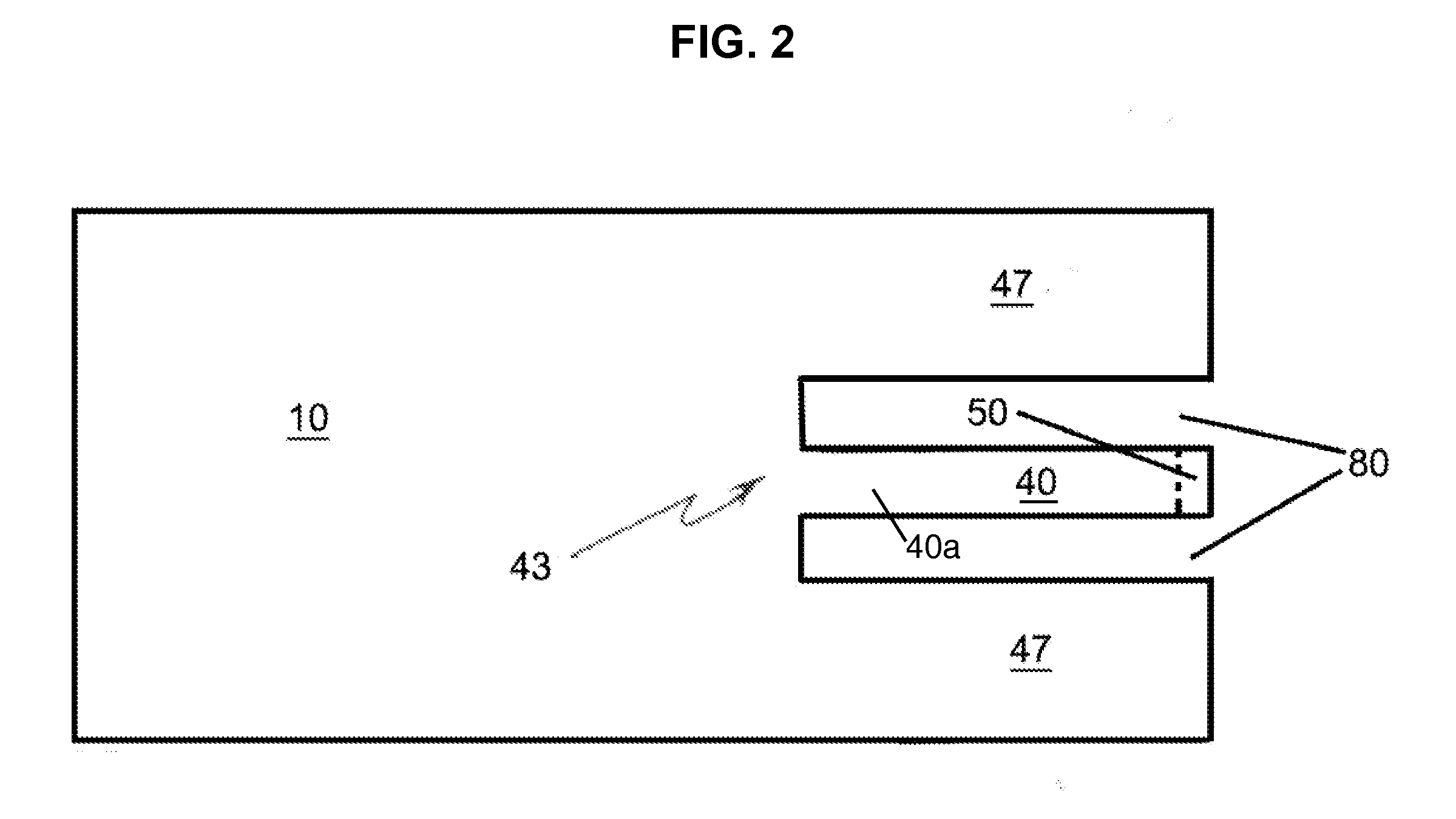High gain planar antenna
a planar antenna, high gain technology, applied in the direction of antennas, antenna details, basic electric elements, etc., can solve the problems of only a narrow bandwidth, insufficient size of the planar antenna for some applications, and affecting the performance of the antenna, etc., to achieve high gain, small size, and easy to mak
- Summary
- Abstract
- Description
- Claims
- Application Information
AI Technical Summary
Benefits of technology
Problems solved by technology
Method used
Image
Examples
Embodiment Construction
[0018]Referring to FIG. 1, it shows an exemplary planar antenna according to the present invention. The antenna includes a radiating plate 10 (also known as “radiator” or “radiated plate”) and a ground plate 20. Both the radiating plate and the ground plate are made of metal material, but other conductive materials may also provide satisfactory results. The space between the radiating plate and the ground plate is not filled with a dielectric substrate but is instead filled with an air layer. The two plates are substantially parallel with each other and are fixed on opposite sides of a dielectric support 30. The ground plate may be fixed on a dielectric substrate 25. The support serves to maintain a desired distance between the radiating plate and the ground plate and keep them substantially parallel to each other. The support can be made of any non-conducting materials, such as, for example, a cellular foam material e.g., ethylene vinyl acetate (EVA).
[0019]At one end of the radiati...
PUM
 Login to View More
Login to View More Abstract
Description
Claims
Application Information
 Login to View More
Login to View More - R&D
- Intellectual Property
- Life Sciences
- Materials
- Tech Scout
- Unparalleled Data Quality
- Higher Quality Content
- 60% Fewer Hallucinations
Browse by: Latest US Patents, China's latest patents, Technical Efficacy Thesaurus, Application Domain, Technology Topic, Popular Technical Reports.
© 2025 PatSnap. All rights reserved.Legal|Privacy policy|Modern Slavery Act Transparency Statement|Sitemap|About US| Contact US: help@patsnap.com



